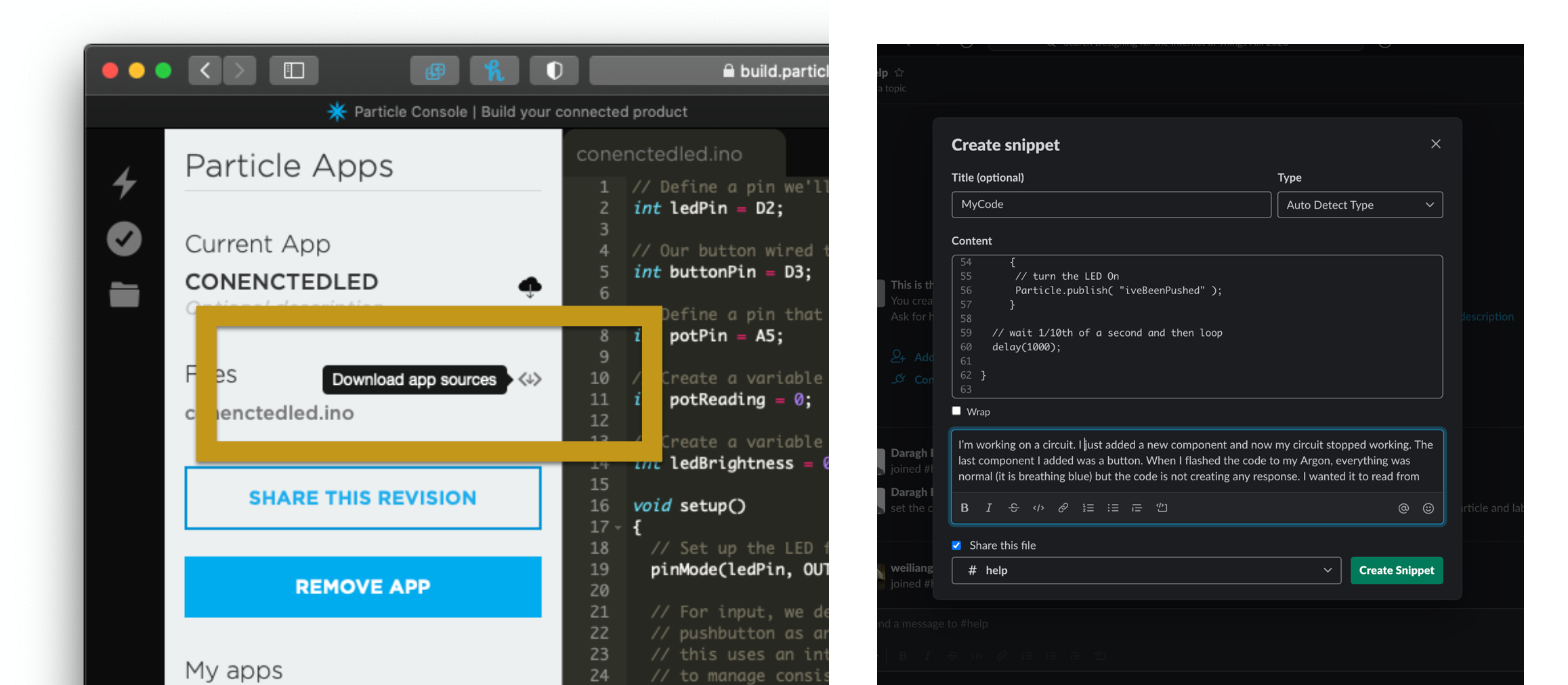Asking for help
21 Sep 2021This class will be remote and it involves writing code, building circuits and making electronics projects. Along the way, you’ll probably encounter a problem or two. And as we won’t be together, our Discord community and in particular #help will be a go-to resource.
Don’t be afraid to ask.
Learning to code and work with circuits can be daunting. Asking for help in a semi-public forum may feel unnerving too. But rest assured asking a question is useful, productive, and helpful. It’s likely if you have encountered a sticking point, someone else will also have the same question or challenge.
So first off, if you feel stuck, don’t be reach out and we’ll do our best to help you.
Tips for asking good questions
If you’re new to electroncis or coding, it can be hard to know exactly where a problem might lie. Is it with the code? Is it with a component? Is it with my wiring? Sometimes even for seasoned experts debugging issues across code, circuitry and cloud connectivity can take a bit of time.
To help us diagnose the root of the problem keep the following in mind:
-
Be specific. Remember to be as clear and detailed about the problem. It might be frustrating and you want a quick response, but slowing down and spending some time to formulate your question is going to get you to a solution faster. This will avoid lots of back and forth on clarifying questions.
-
Offer as much information as possible: Try to offer as much information as possible. Describe what you were trying to achieve. Describe any recent changes you made to code (and refer to line numbers if possible). Describe any recent changes you made to the circuity. Describe any unusual behavior of the circuit or microcontroller. etc. etc.
- Notice the Particle LED. The Particle Board has a central LED. It’s a really helpful diagnostic too to know if your microcontroller is healthy and happy. Is the LED on? What color is it (white means a WiFi issue, red means errors, blue means connection, etc)? Is it flashing or breathing? Spend a moment to see if anything looks unusual with it.

- Include your code: Don’t screenshot your code. Instead download your code file and attach it to the Slack message. This will let us to try out your code on our own machines and find pain points quicker. Here’s how: In the image above, the left hand side shows where to find the
Download App Sourceson the Particle Build tool. On the right hand side, use Slack and select theAdd Text Snippetfeature to share code that we can edit, copy, and paste.

- Include good photos: When jumpers cables are involved, a circuit can get really messy, really fast. That makes it hard to spot small problems with the wiring. Clear, well framed photos of the circuit are essential. I strongly recommend taking the time to take a top-down photo of the circuit to get a birds eye few and then a close up of any new components added. The best approach is a combination of the middle and right photos depicted above.
Summary
Help will be your friend… but… Be clear, be specific and be detailed
- You should upload your code (not a screenshot)
- Take a good well framed photo of your circuit
- You should be as descriptive as possible about recent changes you’ve made
- If the Argon is behaving normally
- If your circuit is responding or doing anything
- etc.
More on getting better help
This is a quick primer on how to ask for help within the course and some important things to pay attention to. Three sources that provide more detailed guides are offered below.
- “How do I ask a good question?” by Stackoverflow:
- Learn faster! When and how to ask for help by Itamar Turner-Trauring.
- Ten Simple Rules for Getting Help from Online Scientific Communities by Giovanni M. Dall’Olio et al.